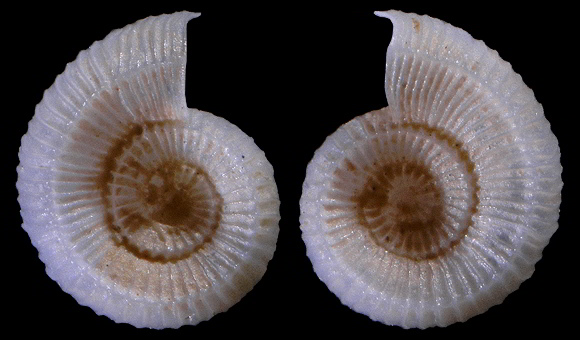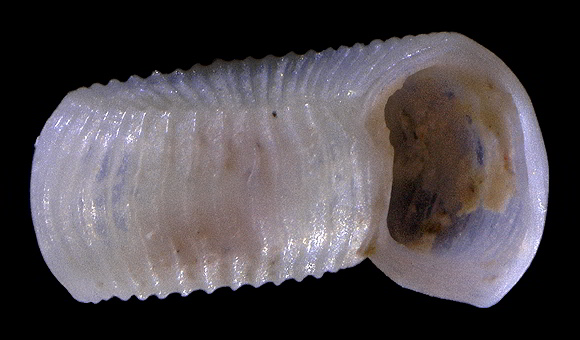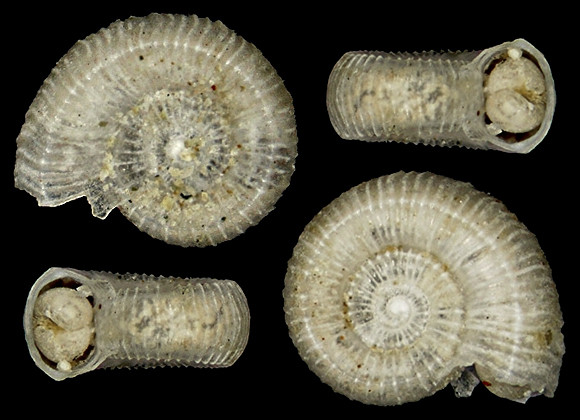Seguenza, 1876

« Protoconch sculptured by irregularly shaped granules that are interconnected to form several indistinct spiral ridges, demarcated from teleoconch by a simple and clear line […]. Teleoconch whorls 2.9 in number, ornamented with very strong apical and basal spiral keels and up to 119 straight to very slightly flexuous axial ribs. Axial ribs 5-20µm in width, wider near periphery; 22-29 present on first whorl, 36-43 on second whorl; straight and radial on first two whorls, slightly flexuous on third whorl with two weak inflections between periphery and keels […]; interspaces at periphery twice rib width on first whorl, three times on succeeding whorls. Keels run along subsequent suture lines on early whorls, located closer to periphery than to suture on third whorl in apical and basal views, with distances from suture to keels being 60-65% to periphery; two keels reach to aperture with approximately same strength. Aperture orthocline, simple… » – Kano, Chikyu & Warén: “Morphological, ecological and molecular characterization of the enigmatic planispiral snail genus Adeuomphalus (Vetigastropoda: Seguenzioidea)”, Journal of Molluscan Studies vol. 75(4), p.401.
500m deep, off Capraia Isola, Arcipelago Toscano, W. Italy. 1,2mm.

« …peristome trapezoidal or almost pentagonal with peripheral part evenly curved between keels, without a clear indentation by preceding whorl. »

« Empty shells of this species have been found in 300-900m depths in the Tyrrhenian Sea of the Mediterranean (Norfroni & Sciubba, 1985; Cecalupo, 1986; Palazzi, 1988; Smriglio, Mariottini & Gravina, 1988). However, these specimens might also be fossils, since they are often worn with their apertures filled with sediment, and no living animal has been discovered. It is therefore uncertain if this Tyrrhenian species represents a living member of the genus. However, since the shells occur with an accompanying fauna well known from the Italian Uppermost Pliocene to Pleistocene deposits, with A. densicostatus and many other taxa known also as extant species, there is a good possibility that it is still living. » – op. cit. p.403.
500m deep, Fiumicino, Roma, Lazio, W. Italy. 2mm.
Original pictures provided by A. Nappo (IT) .
– (CC BY-NC-SA) –